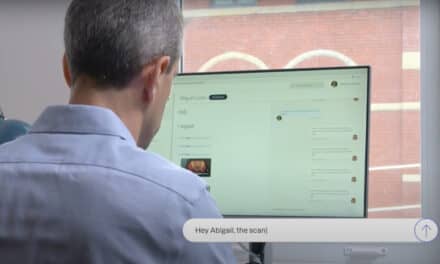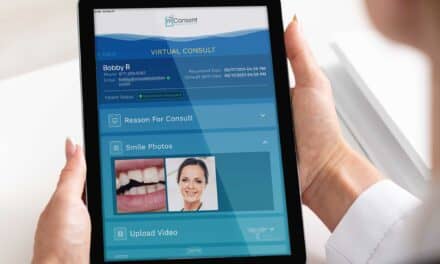With the introduction of artificial intelligence-assisted tools, Invisalign Virtual Care AI gives orthodontists remote insight into aligner fit and seating.
Align Technology launched its first remote monitoring tool in March 2020 to help orthodontists manage Invisalign patients during the shutdown at the start of the pandemic. Now, the company has introduced the newest generation of the tool: Invisalign Virtual Care AI. This iteration of the remote monitoring solution for Invisalign patients features artificial intelligence-assisted tools that aim to streamline doctor and staff workflows.
Orthodontic Products recently spoke to Mitra Derakhshan, DDS, MS, senior vice president, global clinical at Align Technology, to learn how the AI-assisted algorithms are based on doctor settings and work to assess patient photos for both aligner fit and seating.
Orthodontic Products: Align Technology launched the Invisalign Virtual Care platform at the start of the pandemic to help orthodontists maintain continuity of care remotely. How does Virtual Care AI build on that platform?
Mitra Derakhshan, DDS, MS: The first version of Invisalign Virtual Care was launched in 2020 at the outset of the COVID-19 pandemic to connect doctors and patients to ensure continuity of care. Patients could submit photos of their dentition with aligners to their doctors, the doctors in turn would assess these photos periodically for aligner fit and seating and send notifications back to patients advising them of their treatment progress. Invisalign Virtual Care AI builds on this original platform by using doctor settings to automate the assessment of patient submitted photos and subsequent notification of treatment progress. AI-assisted algorithms, based on doctor settings, automatically assess photos for aligner fit and seating and highlight areas of concern to doctors. These algorithms, based on the results of the automatic assessment, pre-approved doctor settings, and confirmation by Align trained personnel, automatically notify patients within approximately 1 hour of the next step in their treatment plan such as advancing to the next aligner tray if they are tracking well, wearing their current aligner tray for additional days, or requesting them to contact their doctor if their treatment is off track.
OP: How does Invisalign Virtual Care AI fit into the workflow of orthodontists and their staff?
Derakhshan: Invisalign Virtual Care AI allows Invisalign providers to digitize the follow up experience of their Invisalign patients via a remote monitoring solution that is fully integrated with the Align Digital Platform. It allows doctors to enroll patients into the tool, and review images and communicate with patients directly from within the Invisalign Doctor Site without the need for a separate login or portal. It enables Invisalign providers to monitor their patient’s treatment progress and prioritize exceptions to treatment tracking without the need for third party workarounds more closely.
OP: Invisalign Virtual Care AI is integrated into the Invisalign Doctor Site. What will orthodontists see when they are on the platform?
Derakhshan: Invisalign Virtual Care AI is the only remote monitoring solution integrated into the Invisalign Doctor Site which enables doctors to review patient images and communicate with patients utilizing their same login via the “Virtual Care” tab which initiates an easy setup via a guided wizard to walk doctors through patient enrollment, review of images, setting up their clinical settings, and other patient management features.
OP: What can orthodontists expect from the AI built into this solution?
Derakhshan: Invisalign Virtual Care AI helps or aids doctors to remotely track a patient’s Invisalign treatment progress. Many orthodontists consider aligner spaces to be the most important indicator of Invisalign treatment tracking. By specifying their preferred settings or using the default settings, doctors can utilize the AI-assisted algorithms to quickly identify areas of poor aligner fit and treatment tracking exceptions. For example, doctors can pre-specify aligner spaces smaller than 0.75 mm to represent good treatment tracking and pre-program an automatic notification of “On Track – please advance to the next aligner tray” to be sent to the patients for such instances. Similarly, doctors can pre-specify aligner spaces larger than 1.5 mm to represent poor tracking and pre-program an automatic notification of “Instructions – please call office to schedule an in-person appointment” to be sent to the patients in these instances. And since Invisalign Virtual Care AI is integrated with the approved ClinCheck treatment plan, pertinent attributes are automatically accounted for during remote monitoring. For example, aligner spaces due to presence of pontics or eruption compensation are automatically identified and not flagged by the AI-assisted algorithms.
OP: What is the patient experience with Invisalign Virtual Care AI?
Derakhshan: Patients can enjoy a convenient and seamless remote monitoring experience via their existing My Invisalign App. They upload photos with each aligner change, after wearing their tray for the doctor prescribed duration, for example weekly. AI-assisted algorithms guide patients real-time in capturing optimal photos, for example advising patients to open their bite, to move closer to the camera lens, to show their back teeth, etc. Patients can then upload these clinically relevant photos to their doctors along with a personal note. The AI-assisted algorithms, based on doctor settings and confirmation by Align trained personnel, measure aligner spaces and notify patients within approximately 1 hour how their treatment is tracking. As mentioned above, patients also receive guidance on next steps such as advancing to the next aligner tray, staying on their current tray for additional days to allow the appropriate teeth movements to take effect, or calling their doctors’ offices if their treatment is off track.
OP: How can Invisalign Virtual Care AI impact chair time in the practice?
Derakhshan: Invisalign Virtual Care AI enables doctors to prioritize treatment tracking exceptions to focus on patients before treatments go off track and adjust office visit schedules as they determine if a patient’s treatment is tracking well.
OP: How can Invisalign Virtual Care AI help expand the geographic reach of practices?
Derakhshan: Invisalign Virtual Care AI is helpful for practices by enabling them to stay more connected than ever to their patients between in-office visits. This means that patients who may be away at college, or on vacation can remain connected to their doctor and the doctor can monitor their treatment progress all within the Align Digital Platform.










